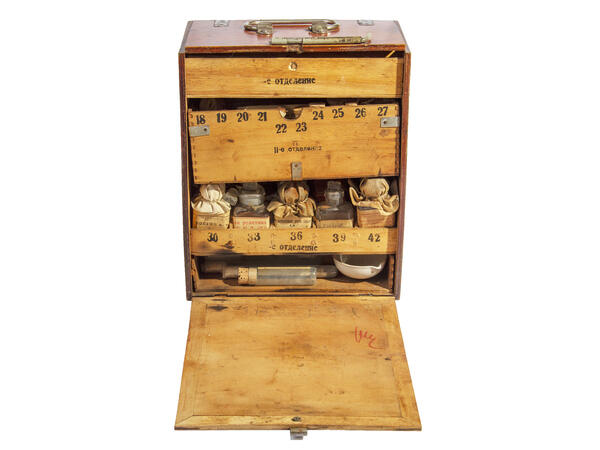One of the important tasks of the military medical service during military training or hostilities is to find chemical warfare agents in water while working in the field. In order to determine whether the water is poisoned and what kind of chemical agent was used, it is necessary to perform several chemical reactions in laboratory test tubes.
In the second half of the 1930s, the problem of determining chemical warfare agents in water became quite acute. In 1937, Major Serebrennikov wrote in the article ‘Chemical reconnaissance of the obstacle belt’ in the second issue of the ‘Military Herald’ journal [Voyenny Vestnik]: ‘Supplying modern armies with the latest chemical weapons: mechanized devices, aircraft chemical spraying equipment, etc., the fast-growing chemical industry makes it possible to use poisonous agents on the battlefield in huge quantities and in a variety of ways’.
The author was concerned about the wide range of modern chemical warfare agents and the fact that in the upcoming armed conflicts the opponents may use mustard gas and other agents ‘affecting skin, being very persistent and necessitating the wear of chemical protective suits, and in some cases, time-consuming decontamination works.’
The Military Medical Museum houses a 1936 specialized chemical detection kit, which helped to determine poisonous agents in water. It used to belong to chemical decontamination detachment No. 144, which operated on the Leningrad battlefront from May 1942 to May 1945.
The kit consists of reagents and laboratory items packed in a red wooden box. The front and top sides of the box are folding. The top cover has a metal handle and a latch.
Inside, the drawer is divided into four compartments. The first compartment contains glass funnels and glass flasks with rubber lids. In the second compartment there are salicylic acid, ethanol, a burner with filters, reagents, a scale of samples for the Zanger-Black device, litmus and reaction papers, potassium iodide, cotton pads soaked in mercury bichloride, filter paper and glass test tubes with rubber stoppers.
The third compartment contains glass tubes, jars with flammable toluene, sulfuric acid, hydrochloric acid and metallic zinc, ether, activated carbon and potassium hydroxide, as well as reagents for preparing test papers of phosgene and diphosgene.
This kit was used to detect deadly chemical warfare agents in water: mustard gas, arsenic, hydrocyanic acid, a warfare agent lewisite, a volatile liquid trichlorethylamine, which was used for anesthesia. Salts, alkaloids, heavy metals, ammonia and nitrous acid could be found as well.



